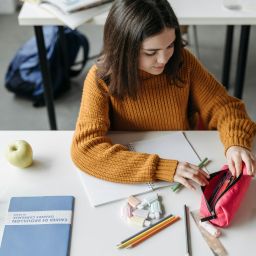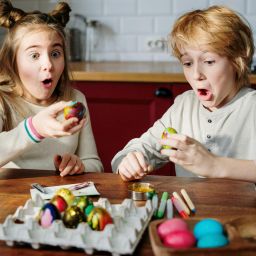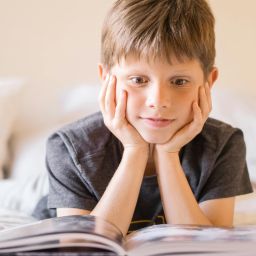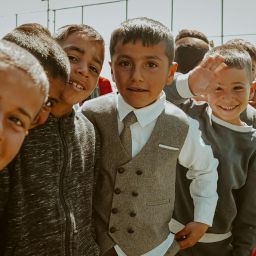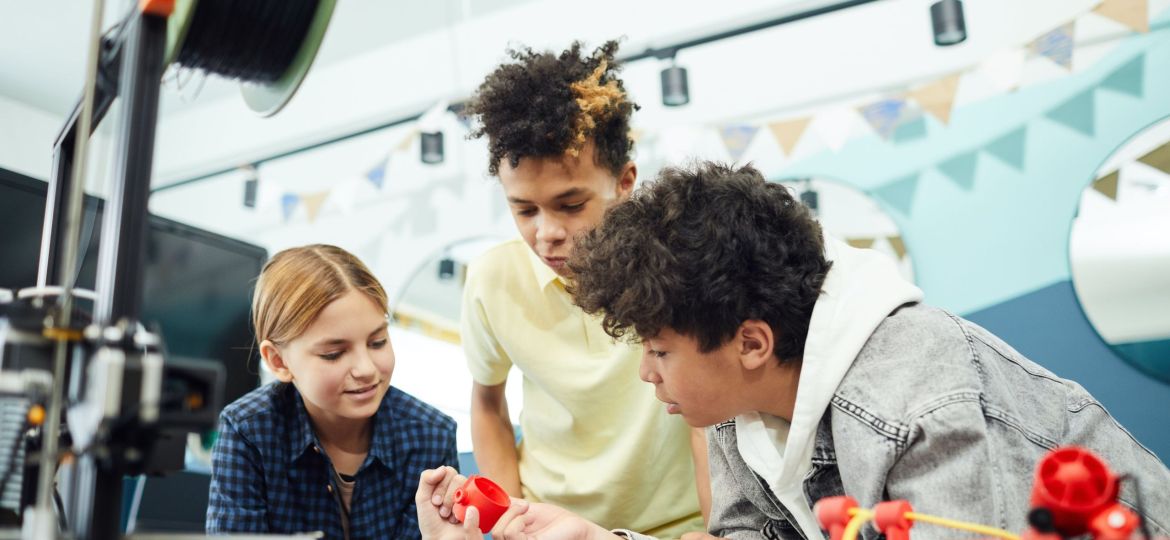
FH Summary: This post emphasizes the power of creativity in childhood
development and how consistent practice and parental guidance can nurture it.
It outlines key strategies to foster creativity, such as cultivating curiosity,
encouraging diverse experiences, embracing mistakes, providing a safe space for
expression and integrating daily creative practice. The post underscores the
philosophy of First Habits, emphasizing that instilling the right habits in
children from the start triggers an upward spiral in their development, transforming
them into tomorrow’s innovators and problem-solvers.
Creativity, the spark that ignites innovation
and progress, is a fundamental part of how we perceive and interact with the
world. Nurturing this priceless attribute in children is not only advantageous
but indispensable for their growth and development. First Habits champions the
belief that creativity, like any skill, can be honed through consistent
practice and parental guidance. In this in-depth exploration, we will traverse
the vast terrain of how children can boost their creativity through habit
formation, setting the stage for an upward spiral in their developmental
journey. As Pablo Picasso once said, “Every child is an artist, the problem
is staying an artist when you grow up” and there is a lot of truth to that
because our analytical brains tend to form as we mature and eventually take
over much of our active thought processes. We as parents can have a huge impact
on our child’s ability to not only understand what creativity is and its
importance, but their ability to use strategies and tactics to increase their
creative output.
The Role of Creativity in Child Development
To appreciate the potential impact of
cultivating creativity in children, we must first understand what it
represents. Creativity is not confined to the realm of artistry. It’s a
cognitive tool, an intellectual Swiss Army Knife of sorts, that equips
us to think beyond the norm, tackle problems with novel approaches and deftly
navigate social dynamics. Creativity is a habit. It is the habit of
continually doing things in new ways to make a positive difference to our life.
Looking through the lens of child development,
promoting creativity provides more than intellectual expansion. It lays the
elevated foundations of personal emotional and social competencies. It’s about
fostering an environment that fuels their imagination, piques their curiosity
and empowers them to venture into the unknown without fear
of failure.
A Journey to Remember: Fostering Creativity in
Sarah’s Life
To put a human face on the abstract concept of
fostering creativity, let’s turn our gaze to Sarah’s narrative. Sarah, a
vivacious ten-year-old, has always had an affinity for weaving intricate tales.
From the age of three, she’d spin stories about everything under the sun – her
dolls going on daring adventures, her family dog exploring alien planets and so
on.
However, as Sarah stepped into her pre-teen
years, her spontaneous storytelling started to ebb. Her parents, once
spectators to her vibrant narratives, noticed this shift and were disconcerted
by her dwindling creative expression. Determined to reignite her storytelling
flame, they sought counsel from education specialists and child psychologists.
That’s when they discovered First Habits and started to comprehend the
paramount importance of fostering creativity through intentional practices and
habits.
Acting on this newfound knowledge, Sarah’s
parents introduced a structured yet flexible routine that reserved time for her
creative pursuits. Every day, Sarah was encouraged to indulge in storytelling,
painting, crafting, and other creative activities. This was not a rigid
classroom environment but an open platform where she could let her imagination
run wild without any prescriptive guidelines or evaluations.
Over time, these daily creative sessions began
to have a transformative impact on Sarah. She once again found joy in crafting
narratives, and her stories resurfaced, infused with richer imagery and more
sophisticated plots. The intentional and consistent practice of creative tasks
had developed into a habit. Her parents’ unwavering support and the freedom to
express her creativity sans judgment engendered a safe space for her creative
instincts to flourish. The increased creativity not only amplified her storytelling
ability but also had positive spill-over effects on her problem-solving skills,
academic performance and social relationships. Sarah was back on an upward
spiral of growth and development, all thanks to the power of habitual creative
practice.
The Art of Cultivating Creativity: Practical
Steps Endorsed by First Habits
At First Habits, we hold the conviction that
creativity can be enhanced, much like a muscle, through sustained practice and
a nurturing environment. Drawing from evidence-based research, here are some
strategic measures that parents can employ to foster creativity in their
children.
Fanning the Flames of Curiosity and Exploration
Curiosity is a trait innate to children. It is
the driving force behind their tireless questioning and relentless exploration.
By encouraging this curiosity, parents can facilitate the development of an
open mindset – a critical component of creative thinking. Let your children
explore their surroundings, ask questions and seek answers. This active
engagement with their environment primes their brain for creative thinking.
Broadening Horizons Through Diverse Experiences
Exposing children to a variety of experiences
can stimulate their creative thought process by expanding their perspectives. This exposure doesn’t necessarily mean grand adventures or overseas
trips. Even simple activities, like a stroll in an unfamiliar park or a visit
to the local museum, can serve as potent stimuli to trigger new ideas and
creative thoughts.
Embracing Mistakes as Stepping Stones
The fear of making mistakes can be a significant
deterrent to creativity. It is vital to create an environment where mistakes
are seen not as failures but as learning opportunities. Foster resilience in
your children by encouraging them to experiment without fear of judgment or
criticism. This approach provides a solid foundation for a creative mindset.
Building a Sanctuary for Expression
Children need a safe space, both physical and
emotional, where they can freely express their thoughts and ideas. Whether it’s
a dedicated corner in their room for creative activities or a dinner table
conversation where their ideas are given a patient hearing, establishing a
supportive environment is key to nurturing creativity.
Incorporating Daily Creative Practice
Last but not least, integrate a daily
creative practice into your child’s routine. It could be a half-hour of
sketching, a quick brainstorming session for story ideas or a fun DIY craft
project. The objective is to make creative thinking an integral, habitual part
of their lives, not a sporadic activity.
The First Habits Effect: Cultivating the
Innovators of Tomorrow
In an era defined by rapid change and
uncertainty, creativity is more than just a desirable trait – it’s a survival
skill. By fostering this skill from an early age, we’re doing more than
boosting our children’s personal development; we’re nurturing the innovators,
problem-solvers and thought leaders of tomorrow.
Instilling the habit of creativity in children
might seem like a formidable task, but remember the age-old adage – every
journey begins with a single step. By guiding our children towards habitual
creative practice, we’re setting them on a trajectory of positive growth,
empowering them to be not just consumers of the world but contributors to it.
Here at First Habits, we’re committed to
equipping parents with the tools and insights necessary to guide their children
on their developmental journey. Join our community, sign up for our weekly
newsletter, and let’s collaborate in shaping the architects of tomorrow.
Bear in mind, fostering the right habits, the
First Habits, from the start, can trigger a positive spiral in your child’s
development. As the visionary Maria Montessori once put it, “The
development of the mind comes through movement and the senses.”
Let’s empower our children to explore, express, and grow, thereby painting
their future with the vibrant colors of creativity.






